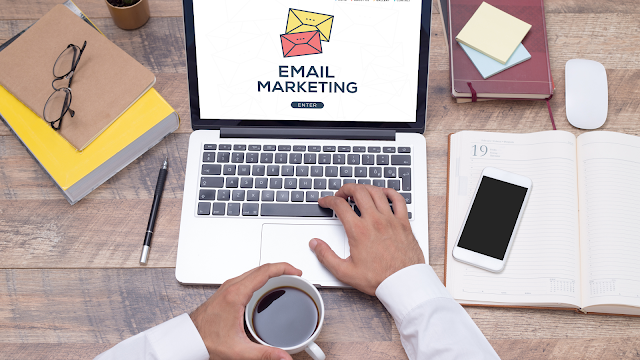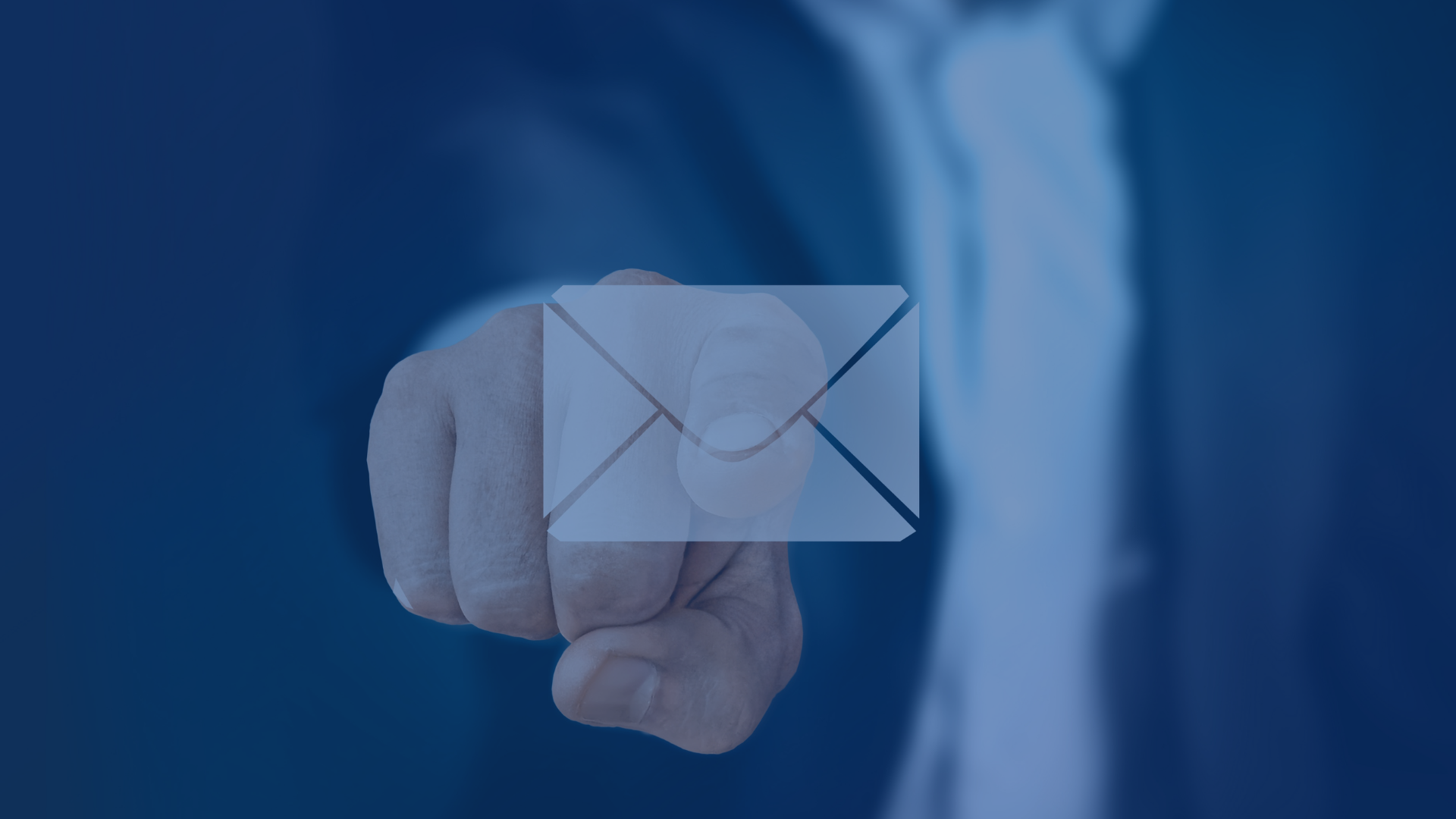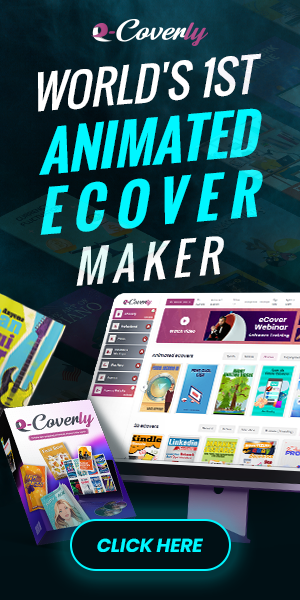Email Marketing Campaign Strategies
The Power of Email Marketing
Email marketing allows businesses to directly communicate with their customers and prospects, delivering personalized messages, valuable content, and compelling offers. Unlike other marketing channels, emails have the advantage of being delivered directly to individuals' inboxes, providing a one-on-one communication experience. This direct and personal approach can significantly enhance brand awareness, and customer engagement, and ultimately lead to increased sales and revenue.
Importance of Effective Email Marketing Campaigns
While email marketing offers immense potential, the key to unlocking its benefits lies in the implementation of effective campaigns. Effective email marketing campaigns are meticulously crafted strategies that align with a business's overall marketing objectives and target audience preferences. These campaigns go beyond simply sending mass emails and instead focus on delivering relevant and timely content to the right recipients.
An effective email marketing campaign is built upon a strong foundation of strategic planning, meticulous execution, and continuous optimization. It involves understanding the needs and preferences of the target audience, segmenting the email list to ensure personalized messaging, and employing persuasive copywriting and captivating visuals to capture attention and drive action.
Understanding Email Marketing Campaigns
Definition and Purpose of Email Marketing Campaigns
Email marketing campaigns refer to strategic and coordinated efforts by businesses to communicate with their target audience through email. These campaigns involve sending a series of emails that are carefully crafted and tailored to achieve specific marketing objectives. The purpose of email marketing campaigns is to engage, inform, and persuade recipients to take desired actions, such as making a purchase, signing up for a webinar, or subscribing to a newsletter.
Benefits of Email Marketing Campaigns
Email marketing campaigns offer numerous benefits that contribute to the success of a business's overall marketing efforts. Some key advantages include:
Direct and Personalized Communication: Email campaigns allow businesses to establish direct and personalized communication channels with their audience. By delivering messages straight to recipients' inboxes, businesses can create a more intimate and tailored experience, leading to higher engagement and conversion rates.
Cost-Effectiveness: Compared to traditional marketing channels, email marketing campaigns are highly cost-effective. Businesses can reach a large number of recipients at a fraction of the cost of print advertising or direct mail campaigns.
Targeted Audience Segmentation: Email marketing campaigns provide the ability to segment the audience based on various criteria such as demographics, interests, or purchase history. This allows businesses to deliver highly targeted content that resonates with recipients, increasing the likelihood of conversions.
Automation and Efficiency: With the use of email marketing automation tools, businesses can streamline campaign processes, such as sending welcome emails, nurturing leads, or sending follow-ups. Automation saves time and ensures timely and relevant communications.
Measurable Results and Analytics: Email marketing campaigns provide measurable data and analytics, allowing businesses to track key metrics such as open rates, click-through rates, and conversions. These insights help businesses understand campaign performance and make data-driven decisions for optimization.
Key Elements of a Successful Email Marketing Campaign
To achieve success with email marketing campaigns, several key elements should be considered and implemented:
Clear Campaign Objectives: Define specific goals and objectives for the campaign, whether it's increasing sales, driving website traffic, or building brand awareness. Clear objectives provide focus and direction for the entire campaign.
Well-Defined Target Audience: Understand the target audience's demographics, preferences, and pain points. This knowledge helps in tailoring content, design, and messaging that resonates with recipients.
Compelling Content and Messaging: Craft engaging and persuasive content that delivers value to recipients. Whether it's educational information, exclusive offers, or entertaining content, the message should be clear, concise, and relevant to the audience.
Eye-Catching Design: Use visually appealing design elements that align with the brand's identity and capture attention. An attractive design enhances the overall email experience and encourages recipients to take action.
Effective Call-to-Action: Incorporate clear and compelling calls-to-action (CTAs) that prompt recipients to take the desired action, such as clicking a link, making a purchase, or signing up for an event. CTAs should be prominently placed and easy to understand.
Mobile Optimization: With the majority of emails being accessed on mobile devices, it is crucial to optimize email campaigns for mobile responsiveness. This ensures a seamless and engaging experience for recipients regardless of the device they use.
Testing and Optimization: Continuously test different elements of the campaign, such as subject lines, content variations, and design layouts. Analyze results and make data-driven optimizations to improve campaign performance over time.
Setting Goals and Objectives
Identifying Campaign Objectives
Before launching an email marketing campaign, it is crucial to identify clear and specific objectives. Campaign objectives serve as a roadmap, guiding the overall strategy and determining the desired outcomes. Common email marketing campaign objectives may include:
Increasing Sales: Drive direct revenue by promoting products or services, offering exclusive discounts, or showcasing limited-time offers.
Lead Generation: Capture leads and expand the email subscriber list through targeted lead generation campaigns, such as content upgrades or gated resources.
Website Traffic: Generate traffic to specific landing pages or the company's website by using engaging content, compelling CTAs, and relevant offers.
Brand Awareness: Boost brand recognition and exposure by delivering valuable content, sharing industry insights, and establishing thought leadership.
Customer Retention: Nurture existing customers, build loyalty, and encourage repeat purchases through personalized communication and exclusive rewards.
SMART Goal Setting for Email Marketing Campaigns
Setting SMART goals is crucial for effective email marketing campaigns. SMART stands for Specific, Measurable, Achievable, Relevant, and Time-bound. Applying this framework ensures that objectives are well-defined, trackable, realistic, aligned with business goals, and bound by a specific timeline. Here's how to apply SMART goal setting:
Specific: Clearly define what you want to achieve with your email marketing campaign. For example, rather than a vague goal of "increase sales," specify the target as "increase sales by 15% within three months."
Measurable: Establish quantifiable metrics to track progress and measure success. This could include metrics like conversion rates, open rates, click-through rates, or revenue generated.
Achievable: Set goals that are realistic and attainable based on available resources, budget, and market conditions. Consider factors such as the size of your email list, the engagement level of your audience, and the industry benchmark.
Relevant: Ensure that the goals you set align with your overall marketing objectives and are relevant to your target audience. Each goal should contribute to the overall success of your marketing strategy.
Time-bound: Set a specific timeframe for achieving your goals. This adds a sense of urgency and helps create a timeline for planning, execution, and evaluation. For instance, "increase lead conversion rate by 10% within two months."
Key Metrics to Track and Measure Success
Tracking and measuring the success of email marketing campaigns is essential to understand their effectiveness and make data-driven improvements. Key metrics to track include:
Open Rate: The percentage of recipients who open the email. It reflects the email's subject line and overall appeal.
Click-through Rate (CTR): The percentage of recipients who click on a link or call to action within the email. It indicates the engagement and effectiveness of the email content.
Conversion Rate: The percentage of recipients who complete the desired action, such as making a purchase, filling out a form, or downloading a resource.
Bounce Rate: The percentage of emails that are undeliverable due to various reasons, such as invalid email addresses or technical issues. A high bounce rate may indicate the need for list hygiene or improvement in email quality.
Unsubscribe Rate: The percentage of recipients who unsubscribe from the email list after receiving a particular campaign. It helps gauge the relevancy and quality of the email content.
ROI (Return on Investment): The financial return generated from the email campaign in relation to the costs invested. It measures the campaign's profitability and effectiveness.
Building an Email List
Importance of a Quality Email List
Building a quality email list is a foundational step in successful email marketing campaigns. An email list composed of engaged and interested subscribers allows businesses to establish direct communication, nurture relationships, and drive conversions. Here's why a quality email list is crucial:
Targeted Reach: A quality email list consists of individuals who have voluntarily opted in to receive communication from your business. This ensures that your messages reach a receptive audience, increasing the likelihood of engagement and conversions.
Personalized Communication: With a quality email list, businesses can segment their subscribers based on demographics, interests, or purchase history. This segmentation allows for tailored and personalized communication, delivering relevant content that resonates with each recipient.
Higher Engagement: Subscribers who have willingly joined your email list are more likely to engage with your content, open your emails, and click on your calls to action. This increased engagement can lead to higher conversion rates and a stronger relationship with your audience.
Strategies for Growing an Email List
Opt-in Forms and Landing Pages:
- Place opt-in forms prominently on your website, inviting visitors to subscribe to your email list.
- Use compelling copy and incentives, such as exclusive discounts, free resources, or access to members-only content, to encourage sign-ups.
- Create dedicated landing pages with persuasive copy and visually appealing designs that highlight the benefits of subscribing to your email list.
Content Upgrades and Lead Magnets:
- Offer valuable content upgrades or lead magnets, such as e-books, guides, templates, or exclusive content, in exchange for email addresses.
- Ensure that the content upgrade or lead magnet is relevant to the interests and needs of your target audience.
- Promote the content upgrade or lead magnet across your website, blog posts, and social media channels to attract new subscribers.
Social Media and Paid Advertising:
- Leverage social media platforms to promote your email list and encourage sign-ups. Use attention-grabbing visuals and compelling copy to entice users to join.
- Run paid advertising campaigns on platforms like Facebook, Instagram, or LinkedIn to target specific audience segments and drive traffic to dedicated landing pages or opt-in forms.
Co-marketing and Partnerships:
- Collaborate with complementary businesses or influencers in your industry to reach a wider audience and expand your email list.
- Jointly create valuable content, host webinars, or run co-branded campaigns that require participants to sign up through your opt-in forms.
Referral Programs:
- Implement referral programs where existing subscribers are incentivized to refer their friends and colleagues to join your email list.
- Offer rewards, such as discounts, exclusive content, or entry into contests, to both the referrer and the new subscriber.
Offline Events and Networking:
- Collect email addresses at offline events, trade shows, or networking gatherings by offering a sign-up sheet or digital kiosk.
- Follow up with these contacts to confirm their interest and add them to your email list.
Customer Onboarding and Checkout Process:
- During the customer onboarding process or checkout process, provide an option for customers to subscribe to your email list for updates, special offers, or exclusive content.
Segmenting and Targeting
Importance of Segmenting Your Email List
Segmenting your email list is a crucial aspect of effective email marketing campaigns. By dividing your subscriber base into distinct segments based on specific criteria, businesses can deliver targeted and relevant content to different audience groups. Here's why segmenting your email list is important:
Improved Relevance: Segmenting allows you to deliver content that is tailored to the unique interests, preferences, and needs of each segment. This relevance increases the chances of engagement and conversion, as subscribers receive content that resonates with them.
Higher Open and Click-through Rates: When emails are personalized and targeted, subscribers are more likely to open them and click on the included links. This leads to higher open rates, click-through rates, and overall engagement with your emails.
Enhanced Customer Experience: By delivering personalized and relevant content, you create a better customer experience. Subscribers feel valued and understood, which fosters a positive relationship with your brand.
Types of Email List Segmentation
Demographic Segmentation
Demographic segmentation involves dividing your email list based on demographic factors such as age, gender, income, occupation, or education level. This segmentation helps you tailor your content and offers to specific demographics that may have different preferences and needs.
Behavioral Segmentation
Behavioral segmentation categorizes subscribers based on their actions and behaviors, such as purchase history, browsing behavior, engagement with previous emails, or interactions with your website. This type of segmentation allows you to target subscribers based on their demonstrated interests and engagement level.
Geographic Segmentation
Geographic segmentation involves segmenting your email list based on geographical factors such as location, time zone, climate, or language. This segmentation enables you to deliver location-specific offers, localize your content, or target subscribers with location-based events or promotions.
Personalization and Dynamic Content
Personalization goes beyond segmentation and involves tailoring the content of your emails to individual subscribers. Dynamic content takes personalization a step further by dynamically changing parts of the email based on the recipient's specific attributes or behaviors. Here's how personalization and dynamic content can enhance your email marketing:
Customized Recommendations: Use subscriber data, such as previous purchases or browsing history, to provide personalized product recommendations or content suggestions that align with their interests.
Personalized Subject Lines: Incorporate the recipient's name or other personalized elements in the subject line to grab their attention and increase open rates.
Dynamic Offers and CTAs: Display offers, discounts, or calls-to-action that are tailored to the subscriber's preferences, past interactions, or stages in the customer journey.
Automated Triggers: Set up automated email sequences triggered by specific actions or behaviors, such as abandoned cart emails or post-purchase follow-ups, to deliver timely and relevant messages.
Dynamic Content Blocks: Use dynamic content blocks to display different sections of an email based on the subscriber's preferences, past purchases, or other relevant data. This allows you to deliver highly targeted content within a single email.
Crafting Compelling Email Content
Understanding Your Audience
Before crafting compelling email content, it's crucial to have a deep understanding of your target audience. This involves knowing their demographics, preferences, pain points, and aspirations. Understanding your audience allows you to create content that resonates with them and drives engagement and conversions.
Types of Email Campaigns
There are various types of email campaigns that serve different purposes in your overall email marketing strategy. Understanding these types can help you create the right content for each campaign. Here are some common types of email campaigns:
Welcome Emails
Welcome emails are the first point of contact with new subscribers. They provide an opportunity to make a positive impression, introduce your brand, set expectations, and deliver any promised incentives or welcome offers.
Newsletters
Newsletters are regular email updates sent to your subscribers. They typically contain valuable and relevant content, such as blog articles, industry news, tips, or product updates. Newsletters help nurture your relationship with subscribers and keep them engaged.
Promotional Emails
Promotional emails aim to drive sales and conversions by highlighting specific products, services, or offers. These emails often include persuasive copy, compelling visuals, and clear calls-to-action (CTAs) to encourage recipients to take action.
Cart Abandonment Emails
Cart abandonment emails are sent to remind subscribers who have added items to their shopping carts but haven't completed the purchase. These emails often include personalized recommendations, incentives, or limited-time offers to encourage the completion of the purchase.
Re-engagement Emails
Re-engagement emails are designed to win back inactive subscribers. They aim to reignite their interest and reestablish a connection with your brand. Re-engagement emails may include special offers, exclusive content, or surveys to gather feedback and understand their needs.
Writing Engaging Subject Lines
Subject lines play a crucial role in enticing recipients to open your emails. To craft engaging subject lines, consider the following tips:
Keep it concise and clear: Use a few words to convey the value or benefit of opening the email.
Create curiosity: Spark interest by using intriguing or thought-provoking subject lines that make recipients curious to learn more.
Personalize when relevant: Incorporate the recipient's name or other personalized elements to grab their attention.
Use action-oriented language: Include action verbs or compelling phrases that inspire readers to take action.
Test and optimize: A/B test different subject lines to understand what resonates best with your audience and optimize for higher open rates.
Best Practices for Email Copywriting
To craft compelling email content, follow these best practices:
Write in a conversational tone: Use a friendly and relatable tone to create a connection with your audience.
Keep it concise and scannable: Break your content into short paragraphs, use bullet points, and highlight key information to make it easy to read and digest.
Use compelling visuals: Include visually appealing images, GIFs, or videos to enhance the visual appeal of your emails.
Personalize the content: Use the recipient's name and other relevant personalization elements to create a sense of individualized communication.
Include a clear CTA: Guide recipients on the desired action by including a clear and prominent call-to-action button or link.
Test and optimize: Continuously test different elements of your email content, such as copy, visuals, CTAs, and timing, to identify what resonates best with your audience and optimize for better results.
Designing Eye-Catching Emails
Importance of Visual Appeal
Visual appeal plays a crucial role in email marketing. Emails that are visually appealing are more likely to capture the attention of recipients, encourage engagement, and drive conversions. Here's why the visual appeal is important in email design:
Grab Attention: Eye-catching visuals, well-designed layouts, and attractive colors help your emails stand out in crowded inboxes, increasing the chances of recipients opening and engaging with your content.
Enhance Brand Perception: Well-designed emails that reflect your brand's visual identity and aesthetics create a professional and cohesive brand image. Consistent and visually appealing emails build trust and reinforce brand recognition.
Improve User Experience: A visually appealing email with clear and intuitive design elements improves the user experience. It makes it easier for recipients to navigate the content, understand the message, and take desired actions.
Email Design Best Practices
Mobile-Friendly Design
With the majority of emails being opened on mobile devices, it's crucial to ensure that your emails are optimized for mobile viewing. Follow these practices for mobile-friendly email design:
- Use a responsive email template that automatically adjusts to different screen sizes.
- Keep your email design and content concise and easily scannable.
- Use legible font sizes and appropriate spacing for touch interactions.
- Test your emails across various devices and email clients to ensure consistent rendering.
Consistent Branding and Layout
Maintaining consistent branding and layout across your emails strengthens brand recognition and helps recipients easily identify your emails. Consider these practices:
- Use your brand colors, fonts, and logo consistently throughout your email design.
- Establish a standardized layout that includes a header, body content, and footer.
- Use a consistent hierarchy of headings, subheadings, and body text to create a visually structured email.
Clear Call-to-Action Buttons
Clear and compelling call-to-action (CTA) buttons are essential for driving engagement and conversions. Follow these guidelines for effective CTA buttons:
- Use contrasting colors that stand out from the rest of the email.
- Make the button size and shape large enough to be easily clickable on both desktop and mobile devices.
- Use persuasive and action-oriented copy on the buttons, such as "Shop Now," "Learn More," or "Get Started."
Use of Images and Videos
Images and videos can enhance the visual appeal and engagement of your emails. Consider these best practices:
- Use high-quality images that are relevant to your content and resonate with your audience.
- Optimize image file sizes to ensure faster loading times.
- Incorporate videos or animated GIFs to provide engaging and interactive content.
Testing and Optimization
Testing and optimization are essential for ensuring the effectiveness of your email design. Here are some testing and optimization practices to follow:
Conduct A/B testing to compare different design elements, layouts, colors, or CTAs to determine what resonates best with your audience.
Test your emails across various email clients and devices to ensure consistent rendering and functionality.
Analyze email engagement metrics, such as open rates, click-through rates, and conversion rates, to identify areas for improvement and optimization.
Automating Email Campaigns
Benefits of Automation
Email automation offers several benefits that can streamline your email marketing efforts and improve overall campaign performance. Here are some key benefits of email automation:
Time and Resource Savings: Automating email campaigns eliminates the need for manual and repetitive tasks, saving you time and resources. Once set up, automated emails are sent automatically based on predetermined triggers or schedules.
Improved Efficiency and Consistency: Automation ensures that your emails are consistently delivered at the right time and in a timely manner. It eliminates the risk of human error and ensures that each subscriber receives the intended communication.
Personalization and Targeting: Email automation allows you to segment your audience and send personalized messages based on specific triggers or actions. This level of personalization enhances customer experience and increases engagement.
Nurturing Customer Relationships: Automated email campaigns enable you to nurture customer relationships by delivering relevant content, targeted offers, and timely follow-ups. This helps build trust, loyalty, and long-term customer engagement.
Key Automated Email Campaigns
Welcome Series
A welcome series is a sequence of automated emails sent to new subscribers to introduce your brand, set expectations, and establish a relationship. The series typically includes a welcome message, a brief introduction to your products or services, and any incentives or offers for new subscribers.
Drip Campaigns
Drip campaigns are a series of pre-scheduled automated emails sent at predetermined intervals. They aim to nurture leads and guide them through the customer journey. Drip campaigns can deliver educational content, product information, testimonials, and incentives based on the subscriber's behavior or preferences.
Abandoned Cart Series
The abandoned cart series is a sequence of automated emails sent to customers who have added items to their shopping carts but haven't completed the purchase. These emails are designed to remind, incentivize, and encourage customers to return and complete their purchases.
Choosing the Right Email Automation Software
Selecting the right email automation software is crucial for implementing effective automated email campaigns. Consider the following factors when choosing the software:
Features and Functionality: Look for email automation software that offers the necessary features such as automation workflows, segmentation capabilities, A/B testing, and integration options with your existing tools.
User-Friendliness: Ensure that the software has an intuitive interface and user-friendly features. This will make it easier for you to create, manage, and optimize your automated email campaigns.
Scalability: Consider the scalability of the software to accommodate your future growth and evolving needs. Ensure that the software can handle a growing subscriber base and offers flexible pricing plans.
Deliverability and Analytics: Check the software's deliverability rates and its ability to provide detailed analytics and reporting. This will help you monitor the performance of your automated email campaigns and make data-driven decisions for optimization.
Integration Capabilities: If you use other marketing tools or platforms, ensure that the email automation software integrates seamlessly with them. This will allow you to streamline your marketing efforts and have a unified view of your customer data.
Deliverability and Compliance
Ensuring Email Deliverability
Ensuring the high deliverability of your email campaigns is crucial for their success. Follow these practices to improve email deliverability:
Build a Quality Email List: Use permission-based methods to grow your email list, ensuring that subscribers have explicitly opted in to receive your emails. Avoid purchasing or renting email lists, as they often contain outdated or low-quality addresses.
Authenticate Your Emails: Implement email authentication protocols such as SPF (Sender Policy Framework) and DKIM (DomainKeys Identified Mail) to verify the authenticity of your emails. This helps ISPs (Internet Service Providers) recognize your emails as legitimate and increases their chances of reaching the inbox.
Maintain a Good Sender Reputation: ISPs monitor the reputation of email senders to determine email placement. Maintain a good sender reputation by consistently sending relevant and engaging content, minimizing spam complaints, and adhering to best practices.
Monitor and Improve Email Engagement: ISPs consider recipient engagement as a factor for email placement. Monitor metrics such as open rates, click-through rates, and unsubscribes to understand how recipients engage with your emails. Optimize your content and targeting to improve engagement.
Best Practices for Avoiding Spam Filters
Avoiding spam filters is crucial for ensuring your emails reach the intended recipients. Adhere to these best practices to minimize the chances of your emails being flagged as spam:
Use a Reputable Email Service Provider (ESP): Choose an ESP with a good reputation for email delivery. Reputable ESPs have measures in place to prevent spam and adhere to email marketing best practices.
Craft Relevant and Personalized Content: Create email content that is relevant to your audience and personalized based on their preferences and behaviors. Avoid using excessive capitalization, exclamation marks, or misleading subject lines that may trigger spam filters.
Optimize Email Structure and Formatting: Structure your emails with a clear hierarchy and use proper formatting, including paragraphs, bullet points, and headings. Avoid using excessive fonts, colors, or HTML coding that can trigger spam filters.
Test Your Emails: Before sending your campaigns, use spam testing tools or services to identify any elements that may trigger spam filters. These tools analyze your email content and provide recommendations for improvement.
Compliance with Email Marketing Laws and Regulations
Complying with email marketing laws and regulations is essential to maintain trust with your subscribers and avoid legal issues. Consider the following:
Permission and Consent: Ensure that you have proper permission from subscribers to send them marketing emails. Implement a double opt-in process to confirm subscribers' consent and provide clear options to unsubscribe.
Include Accurate Sender Information: Include accurate sender information, including your company name, physical address, and a clear way for recipients to contact you. This helps establish transparency and builds trust.
Provide an Unsubscribe Option: Include a prominent and easy-to-use unsubscribe option in every email. Honor unsubscribe requests promptly and removes unsubscribed addresses from your mailing list.
Comply with Anti-Spam Laws: Familiarize yourself with anti-spam laws such as CAN-SPAM Act (in the United States) and GDPR (in the European Union). Ensure that your email marketing practices align with the requirements of these laws, including proper identification, opt-out mechanisms, and data handling.
Tracking and Analyzing Email Campaign Performance
Essential Email Marketing Metrics
Tracking and analyzing email marketing metrics is essential to measure the success of your campaigns and make data-driven decisions. Here are some essential email marketing metrics to monitor:
Open Rate: The percentage of recipients who opened your email. It indicates the effectiveness of your subject lines and the level of interest generated by your content.
Click-Through Rate (CTR): The percentage of recipients who clicked on a link within your email. It measures the engagement and effectiveness of your email content and call-to-action.
Conversion Rate: The percentage of recipients who completed a desired action, such as making a purchase or filling out a form. It reflects the effectiveness of your email in driving desired outcomes.
Bounce Rate: The percentage of emails that were not delivered successfully. Bounces can be categorized as either soft bounces (temporary issues) or hard bounces (permanent issues). Monitoring bounce rates helps identify deliverability issues.
Unsubscribe Rate: The percentage of recipients who unsubscribed from your email list after receiving a particular campaign. It indicates the level of dissatisfaction or disinterest among your subscribers.
Email Analytics and Tracking Tools
To effectively track and analyze email campaign performance, consider using email analytics and tracking tools. Here are some popular tools:
Google Analytics: Integrating Google Analytics with your email campaigns allows you to track email-driven website traffic, conversions, and user behavior. It provides valuable insights into the effectiveness of your emails in driving website engagement and conversions.
Email Service Provider (ESP) Analytics: Most ESPs offer built-in analytics and reporting features that provide detailed insights into your email campaigns. These features include metrics such as open rates, click-through rates, and conversion tracking.
Click Heatmaps: Click Heatmaps visually display the areas within your emails that receive the most clicks. This information helps you understand which elements or links are attracting the most engagement.
Conversion Tracking Tools: Many email marketing platforms and analytics tools provide conversion tracking features. These tools allow you to track specific actions taken by recipients, such as purchases, form submissions, or downloads, directly attributed to your email campaigns.
A/B Testing for Optimization
A/B testing, also known as split testing, is a valuable technique for optimizing your email campaigns. It involves testing variations of specific elements within your emails to determine which performs better. Here's how to conduct A/B testing for email optimization:
Select a Variable: Identify a specific element within your email to test, such as the subject line, call-to-action button, or email layout.
Create Variations: Develop two or more versions of the selected element with different variations. For example, you can test two subject lines or two different button colors.
Split Your Audience: Randomly divide your email list into segments and assign each segment to receive one of the variations.
Monitor and Analyze: Track the performance of each variable using the identified metrics. Compare the results to determine which variation performs better.
Iterate and Optimize: Based on the insights gathered from A/B testing, implement the best-performing variation and continue testing other elements to continuously optimize your email campaigns.
Integrating Email with Other Marketing Channels
Email and Social Media Integration
Integrating email marketing with social media can amplify your marketing efforts and enhance your overall reach. Here's how you can integrate email and social media effectively:
Cross-Promotion: Promote your social media profiles and encourage email subscribers to connect with you on platforms such as Facebook, Instagram, Twitter, or LinkedIn. Include social media icons and links in your email templates and encourage subscribers to follow or engage with you on social media.
Shareable Content: Create email content that is highly shareable on social media. This can include valuable resources, engaging stories, or exclusive offers. Incorporate social sharing buttons in your emails to make it easy for recipients to share your content with their social networks.
User-Generated Content: Encourage your email subscribers to share their experiences, testimonials, or user-generated content on social media. Run contests or campaigns that encourage subscribers to post about your brand and use a specific hashtag. Showcase the best user-generated content in your emails to foster a sense of community.
Targeted Advertising: Leverage your email subscriber data to create highly targeted social media advertising campaigns. Use custom audiences or lookalike audiences on platforms like Facebook to reach users who have similar characteristics to your email subscribers. This helps in expanding your reach and targeting relevant audiences.
Email and Content Marketing Synergy
Integrating email marketing with content marketing allows you to deliver valuable content directly to your subscribers' inboxes. Here's how you can synergize email and content marketing:
Content Updates: Send regular newsletters or updates to your email subscribers, featuring your latest blog posts, articles, or videos. Provide teaser content in the email and encourage subscribers to click through to your website to consume the full content.
Content Upgrades: Offer exclusive content upgrades, such as ebooks, whitepapers, or case studies, to your email subscribers. Promote these upgrades within your email campaigns to incentivize sign-ups and deliver valuable content that complements your email messaging.
Personalized Content Recommendations: Leverage data from your email marketing platform and content management system to personalize content recommendations for your subscribers. Analyze their engagement history and preferences to deliver relevant and targeted content recommendations tailored to their interests.
Repurposing Content: Repurpose your top-performing content from blog posts, videos, or webinars into email-friendly formats. Condense key insights, highlight important points and provide links to the full content for those who want to explore further. This allows you to extend the lifespan of your content and reach a wider audience.
Email and Customer Relationship Management (CRM)
Integrating email marketing with a customer relationship management (CRM) system enables you to leverage customer data and enhance your email campaigns. Here's how you can integrate email and CRM effectively:
Segmentation and Personalization: Utilize customer data stored in your CRM to segment your email list and personalize your email campaigns. Use data such as purchase history, demographics, or customer behavior to send targeted and personalized messages that resonate with each recipient.
Automated Workflows: Integrate your email marketing platform with your CRM to automate email workflows based on specific customer actions or triggers. This allows you to send timely and relevant emails, such as abandoned cart reminders, post-purchase follow-ups, or upsell/cross-sell offers.
Lead Nurturing: Align your email marketing efforts with your CRM's lead nurturing capabilities. Create automated email sequences that deliver targeted content and offers to move leads through the sales funnel. Track engagement and interactions to identify the most promising leads for further follow-up.
Data Sync and Tracking: Ensure that data from your email marketing platform and CRM system sync seamlessly. This enables you to track and analyze email campaign performance within your CRM, providing a holistic view of customer interactions and engagement. By tracking email opens, clicks, conversions, and other key metrics directly within your CRM, you can gain valuable insights into the effectiveness of your email campaigns and their impact on the customer journey.
Personalized Customer Communication: With CRM integration, you can access detailed customer profiles and historical interactions. Leverage this information to craft highly personalized and relevant email communications. Address customers by name, reference their previous purchases or interactions, and tailor the content to their specific needs and preferences.
Seamless Sales Alignment: Integrate your CRM with your email marketing platform to facilitate seamless communication between sales and marketing teams. Enable easy transfer of qualified leads from email campaigns to the sales team, ensuring a smooth transition and consistent messaging throughout the customer journey.
Retention and Customer Loyalty Strategies
Nurturing Existing Subscribers
Retaining existing subscribers is crucial for the long-term success of your email marketing campaigns. Here are strategies to nurture your existing subscribers:
Engaging Content: Continue delivering valuable and relevant content to your subscribers. Share informative articles, tips, industry insights, or exclusive resources that keep them engaged and interested in your brand.
Personalization: Use the data you have about your subscribers to personalize your email content. Address them by name, segment your list based on their preferences, and tailor your messages to their specific needs and interests.
Regular Communication: Maintain regular communication with your subscribers to stay top-of-mind. Send newsletters, updates, or curated content on a consistent basis, but be mindful not to overwhelm them with too many emails.
Exclusive Content or Sneak Peeks: Reward your loyal subscribers by offering them exclusive content or sneak peeks into upcoming products, services, or promotions. Make them feel special and appreciated for being part of your email list.
Loyalty Programs and Exclusive Offers
Implementing a loyalty program and offering exclusive offers can incentivize repeat purchases and foster customer loyalty. Consider the following strategies:
Loyalty Points or Rewards: Introduce a points-based system where subscribers earn rewards for their engagement, such as making purchases, referring friends, or sharing their content. Offer incentives like discounts, freebies, or access to exclusive events.
VIP Tiers: Create different tiers within your loyalty program based on customer engagement or spending levels. Offer additional perks and benefits to customers who reach higher tiers, such as personalized recommendations, early access to sales, or dedicated customer support.
Limited-Time Offers: Surprise your subscribers with exclusive limited-time offers that are only available to loyal customers. This can include flash sales, early bird discounts, or special promotions tailored specifically to their preferences.
Personalized Recommendations: Leverage customer data to provide personalized product recommendations based on their purchase history or browsing behavior. This shows your customers that you understand their needs and preferences, enhancing their loyalty.
Feedback and Surveys
Collecting feedback from your subscribers is invaluable for improving your email campaigns and overall customer experience. Consider the following strategies for gathering feedback:
Feedback Surveys: Regularly send out surveys to your subscribers to gather their opinions, suggestions, and preferences. Keep the surveys concise and offer incentives, such as entry into a giveaway or a discount code, to encourage participation.
Feedback Loops: Enable a feedback loop by actively encouraging subscribers to provide feedback or reply to your emails. Respond promptly and personally to their feedback, showing that you value their opinions and are committed to addressing their concerns.
Preference Centers: Create preference centers where subscribers can customize their email preferences and frequency. This allows them to have control over the types of emails they receive, ensuring they only receive content that is relevant and interesting to them.
A/B Testing: Use A/B testing to gather feedback indirectly by testing different variations of your emails and analyzing the performance metrics. This helps you understand what resonates best with your subscribers and optimize your campaigns accordingly.
Frequently Asked Questions (FAQs)
What is the ideal frequency for sending emails?
Finding the ideal email frequency depends on your audience and the type of content you deliver. Generally, a balance between staying top-of-mind and avoiding email fatigue is recommended. Test different frequencies and monitor subscriber engagement to determine what works best for your audience.
How can I improve my email open rates?
To improve email open rates, consider the following tactics:
- Craft compelling subject lines that grab attention and create curiosity.
- Segment your email list and send targeted, relevant content to each segment.
- Personalize your emails by addressing subscribers by name and tailoring the content to their preferences.
- Experiment with different send times to find the optimal timing for your audience.
- Test different email designs and layouts to make your emails visually appealing.
How do I prevent my emails from going to spam?
To avoid spam filters and improve deliverability:
- Use a reputable email service provider.
- Ensure your email list consists of engaged and opted-in subscribers.
- Avoid using spam trigger words and phrases in your subject lines and content.
- Authenticate your emails by implementing SPF, DKIM, and DMARC protocols.
- Regularly monitor your email deliverability and maintain a healthy sender reputation.
Should I use a single opt-in or double opt-in process?
Both single opt-in and double opt-in processes have their benefits. Single opt-in allows for a quick and seamless signup experience, while double opt-in provides an added layer of confirmation and reduces the risk of fake or incorrect email addresses. Consider your specific goals and preferences when choosing the opt-in process that suits your needs.
How can I personalize my email campaigns effectively?
Effective personalization can be achieved by:
- Collecting and utilizing relevant customer data, such as demographics, preferences, and past interactions.
- Addressing subscribers by name and tailoring the content based on their interests.
- Incorporating dynamic content elements, such as personalized product recommendations or location-specific offers.
- Implementing triggered emails based on specific customer actions or milestones.
- Continuously analyzing and refining your personalization strategies based on subscriber feedback and performance metrics.
What are the best times to send emails for maximum engagement?
The best times to send emails can vary depending on your target audience and industry. However, studies have shown that generally, early mornings and midweek tend to have higher open and click-through rates. Experiment with different send times and analyze engagement metrics to identify the optimal timing for your specific audience.
How do I re-engage inactive subscribers?
To re-engage inactive subscribers, consider the following strategies:
- Send targeted re-engagement campaigns with compelling subject lines and offers.
- Offer exclusive content or discounts to incentivize them to re-engage.
- Use personalized recommendations based on their past interactions to reignite their interest.
- Implement a preference center where they can update their email preferences and frequency.
- Consider removing inactive subscribers who haven't shown interest despite re-engagement efforts to maintain a healthy list.
What are the essential elements of a welcome email?
A welcome email should include:
- A warm and personalized greeting.
- A brief introduction to your brand, its values, and the benefits of being a subscriber.
- Clear and concise information on what subscribers can expect from your emails.
- A call-to-action that encourages subscribers to take the desired next step, such as visiting your website, making a purchase, or exploring your products/services.
Throughout this guide, we've explored a range of effective strategies for email marketing campaigns. We've discussed the power of email marketing, the importance of setting goals, building an email list, segmenting and targeting, crafting compelling content, designing eye-catching emails, automating campaigns, ensuring deliverability and compliance, tracking performance, integrating with other marketing channels, and fostering customer loyalty.
To achieve optimal results with your email marketing campaigns, it's crucial to embrace a culture of continuous improvement. Test different approaches, analyze performance metrics, and iterate based on the insights gained. By experimenting, learning from data, and adapting your strategies, you can refine your campaigns to better engage your audience and drive desired actions.
Email marketing continues to be a highly effective channel for businesses to engage with their audience, nurture customer relationships, and drive conversions. By implementing the strategies outlined in this guide, you can create impactful email campaigns that deliver relevant content, foster personalization, and build long-term customer loyalty. Remember to stay abreast of industry trends, adapt to evolving customer preferences, and always prioritize providing value to your subscribers.
In conclusion, with the right strategies, thoughtful planning, and a commitment to delivering valuable content, email marketing can be a powerful tool in your marketing arsenal. Harness the power of email marketing to connect with your audience, drive engagement, and achieve your business objectives. Start implementing these strategies today and watch your email campaigns thrive.



.png)












